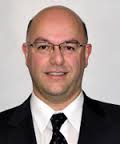Day 2 :
Keynote Forum
Albert S Khouri
Rutgers New Jersey Medical School, USA
Keynote: Evidence-based decisions and real life applications
Time : 08:30-09:00

Biography:
Albert S Khouri, MD, is a Faculty, Program Director of the Ophthalmology Residency, and Associate Director of the Glaucoma Division at Rutgers University- New Jersey Medical School in Newark, New Jersey. Besides maintaining a clinical practice, he has several research interests, mainly related to telemedicinernin glaucoma. Being a part of the telemedicine research team examined the direct translation of such applications such as Non-mydriatic imaging combined withrndigital filters and tele-presence has brought revolution in the field of ophthalmology. He has received the American Glaucoma Society’s MAPS Award, which was instrumental in his telemedicine research.
Abstract:
Glaucoma is a group of blinding diseases characterized by optic neuropathy and visual field damage. The diagnosis ofrnglaucoma remains elusive due to its slow and chronic nature. Both structure and function testing are needed in manyrnpatients to confirm the diagnosis. Over the past two decades we have learned many lessons from clinical trials includingrnthe identification of new risk factors and guidelines to treatment. Lessons from clinical trials apply directly to the real lifernmanagement of glaucoma. However, despite the advances in our knowledge base challenges and obstacles remain in saving vision in glaucoma patients before permanent damage occurs.
Keynote Forum
Arpitha Parthasarathy
US Medical Innovations, USA
Keynote: Advances in Retinoblastoma
Time : 09:00-09:30

Biography:
Arpitha Parthasarathy completed her PhD in Biomedical Sciences from Aravind Eye Hospitals, India and Postdoc from National Institutes of health, Maryland. She\\r\\nhad her short Postdoctoral stints at GWU and University. She has published in many peer reviewed ophthalmic journals and is now the “Director of Translational and\\r\\nMolecular Biology Research” at Plasma Medicine Life Sciences and heads the Translational and Molecular Biology Division of Jerome Canady Research Institute\\r\\nfor advanced Biological and Technical Sciences, USA.
Abstract:
Retinoblastoma (RB1) is a progressive cancer which mainly occurs in children, which is caused by genetic or epigenetic\\r\\nalterations that lead to inactivation of both alleles of the RB1 gene. Retinoblastoma accounts for 11% of cancer in the\\r\\nfirst year of life. Recent studies have suggested the use of intravitreal therapy using VEGF as a photodynamic therapy,\\r\\nhowever, chemoprophylaxis for tumor treatment regimen still seems to be the best accepted approach for tumor bearing\\r\\nretinoblastoma. Recent studies have suggested that mRNA-365 targets cyclin dependent kinase 6/4 induces tumor progression\\r\\nand yet chemotherapeutic intervention has been the only available method as therapy. We report for the first time in the field\\r\\nof ocular tumors, that the cold atmospheric plasma induces an altered energy metabolism via redox potential and induces\\r\\nspecific receptors like TRAIL-R1 to be elevated causing cell death of retinoblastoma cells in vitro. The elevated expression\\r\\nof TNF-associated receptor TRAIL-R1 induces DNA nick and apoptosis possibly via p53 and Nf-kb pathway. The specificity\\r\\nand selectivity of tumor cell death/apoptosis with the use of cold atmospheric plasma suggests that a combination of cold atmospheric plasma along with reduced doses of chemotherapeutic drug will highlight the significance in the treatments of ocular tumors.
